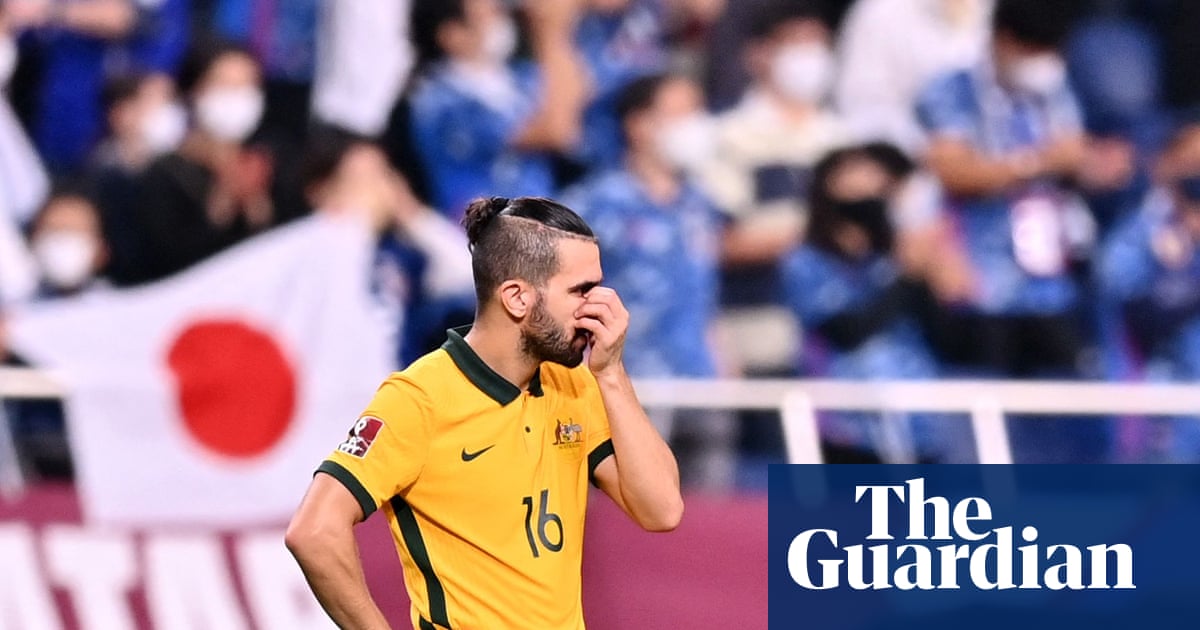
Samurai Blue once felt inferior to the Socceroos, but a 60-team J League has created such depth that Australia enter the World Cup qualifier as underdogs
The last time Australia tasted success against Japan, on a freezing cold night at the MCG way back in 2009, Australian fans unfurled a banner that read: “Nippon: Forever in our Shadow.” This was at a time when Tim Cahill’s heroics in Kaiserslautern, where Australia defeated Japan 3-1 at the 2006 World Cup, were still fresh in the memory. It’s a banner that stuck in the craw of Japanese fans for many years.
Cahill, as he had been in Germany, was Japan’s kryptonite again that night, scoring both of Australia’s goals in front of more than 74,000 fans. In the decade and a half since, however, the paths of the two countries have trended in very different directions. The shadow, as it was, now casts the other way. Since that meeting at the MCG, the record reads six wins to Japan, three draws, zero wins to Australia.
“In 2006 I think it’s fair to say Japan had an inferiority complex when it came to playing against teams that had ‘famous’ players from the Premier League, and that endured with regards to Australia until the Asian Cup final in 2011,” said Sean Carroll, author of Between the Lines: Navigating the world of Japanese Football.
“That win undoubtedly served as a watershed moment and gave Japan confidence in subsequent games against the Socceroos, and in the few meetings after that they went toe-to-toe with Australia to draw several times. The sands have shifted further into Japan’s favour in recent years. Not only are they now the superior side but they and Australia both know it.”
In another universe Peter Cklamovski could have been coaching the Socceroos in their vital World Cup qualifier against Japan on Tuesday night at Saitama Stadium. The FC Tokyo boss was one of a small number of names linked to the post after Graham Arnold’s departure, before Tony Popovic was ultimately handed the reins.
The 45-year-old, a former longtime assistant of Ange Postecoglou at Melbourne Victory, the Socceroos and Yokohama F Marinos, has worked in Japan since 2018 and credits their success to long-term planning.
“They’ve got 60 professional clubs with all the resources for a player to be at their best, with funding and facilities, and they stick to the plan. That’s a credit to the JFA and I think that’s a reason why they do things better than most countries in Asia.”
The foundation for Japan’s modern-day success, with a depth of talent the envy of the continent, is the domestic J League, founded in 1993 and now boasting 60 teams across three divisions – all connected by promotion and relegation. The A-League, by comparison, still has only 13 teams and no prospect of an aligned second division on the horizon.
“They were always looking at things with a mid- to long-term vision, rather than just simply hoping for immediate returns,” Carroll says. “That has allowed the growth to happen gradually over time.
“While the J League has, of course, had eras bringing in famous, fading foreign stars for big money there has always been a focus on producing homegrown talent, either in the high school, university, or J League youth categories, and foreign quotas to ensure local players get opportunities to develop once in the top team.
“The league has been expanded bit by bit over the years, creating and supplying demand in tandem, and ensuring that requirements for membership are, for the most part, achievable as clubs have taken their first steps up into J2, or now J3, from the semi-pro or amateur leagues.”
Sign up to Australia Sport
Get a daily roundup of the latest sports news, features and comment from our Australian sports desk
after newsletter promotion
That connected structure, all the way down to regional areas, is something Cklamovski would like to see Australia replicate.
“I think there’s something to take from that to help our leagues – the A-League, the [second division], if that’s ever going to start, how the states can connect [with that] and have a promotion and relegation system in our own leagues one day … The stronger the leagues, the more players we can export. Then one day we can all dream of winning the World Cup.”
The former Japan Football Association general secretary Saburo Kawabuchi – credited as the brainchild of the J League – described it as: “a social revolution, different from just making Japan good at football.
“The Japanese had not experienced this kind of community-based sports club, because people didn’t know about them. The top people from government and industry had been abroad and knew about how good sports clubs were, but they didn’t think of setting them up in Japan.
“They thought abroad is abroad and Japan is Japan, they are different.”
Remember the “Football, but not as you know it?” tagline? The A-League was Australia’s football revolution. But for myriad reasons Australian football lost its compass. The results, 30 years on, speak for themselves.

